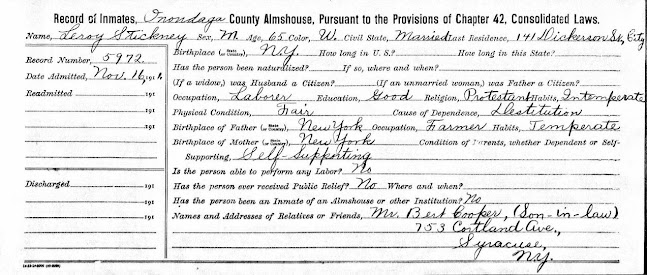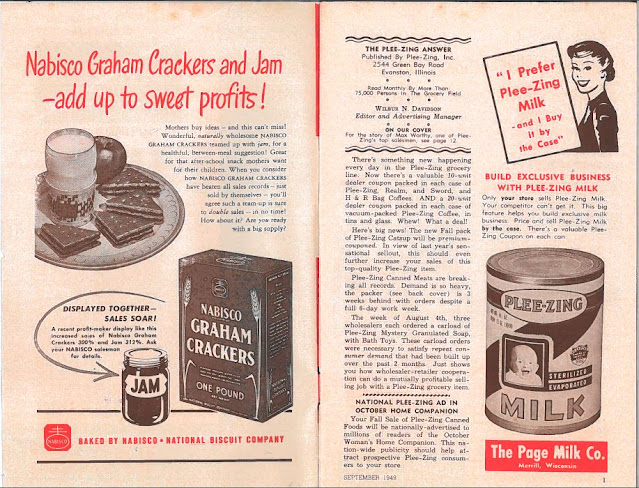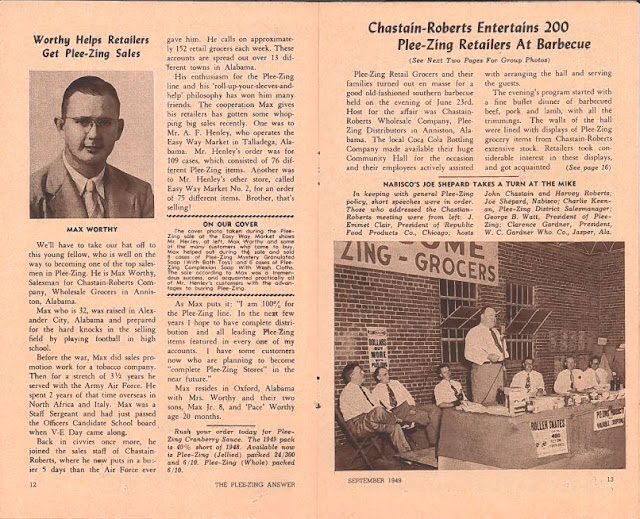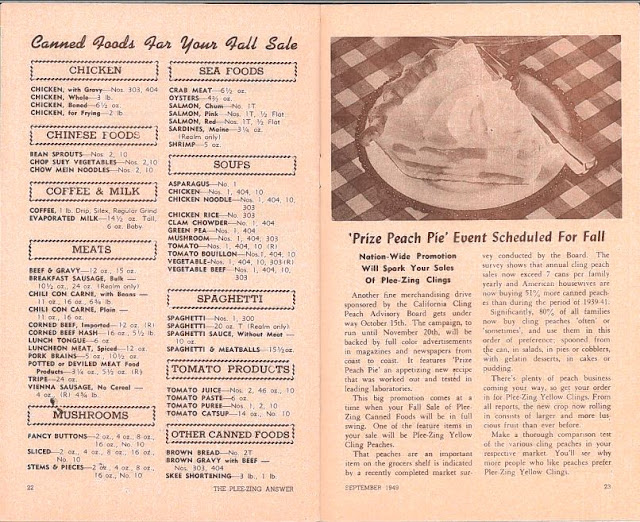Recently a 1 lb. empty can of Sky Maid Coffee was auctioned off on ebay. What caught my attention was on the back of the can:
"Packed for Household Products Co., Evanston, Illinois." I had never heard of Household Products Co., and was unable to find any information online about it. So I contacted Researcher Nonpareil Mike Kelly to ask him if he ever heard of Household Products Company. He said that he had not but he would check to see what he could come up with. This began a flood of emails and texts from Mike about Household Products Co. and their parent, Plee-Zing, Inc. When I had attempted my own research I came up empty handed but not Mike. He is truly able to pull a rabbit out of his hat when it comes to research.
 |
| With apologies to Rocky and Bullwinkle |
BTW the Sky Maid empty coffee can sold for $224.95.
So, sit back and relax and I will tell you the story of Household Products, Plee-zing, Inc., their parent and William L. Stickney. Although Stickney was not the founder of Plee-Zing he was the person most responsible for its success.
William Leopold Stickney, Sr. was born April 11, 1884 in Morris, New York to Laroy Stickney (1846-1922) and Martha J. "Mattie" O'Neill (1848-1922). Laroy and Mattie had been married July 2, 1871 in Logan County, Illinois. The groom was twenty-five years old; the bride was twenty-three.
In his early years Laroy Stickney was a Photographer by trade:
but in later years Laroy Stickney was a machinist for an automobile manufacturer.
 |
| Laroy Stickney |
Laroy and Mattie were blessed with four children: Ona A./Mrs. Albert H. Cooper (1874-1925), Ida Elmira/Mrs. John F. Snyder (1877-1961), Peter LeGrand (1882-1934), and William Leopold (1884-1949). There was mention of a fifth child who died young, but I was unable to find any information about them.
William L. Stickney makes his first appearance in the 1892 New York State Census:
The Stickney Family was living in the Town of Lenox, Madison County, New York where Leroy (sic) is listed as a photographer.
The 1900 US Census finds the Stickney Family living at 43 East Walnut in Oneida Village in the Town of Oneida, Madison County, New York. That address no longer exists. The family consisted of: Laroy (54 years old), Martha (52), Peter (18), William (16), and niece Pearl Cross (8). Laroy and Martha said they had been married for thirty years. Martha said she had given birth to five children; four of whom were still alive in 1899. Laroy gave his occupation as "photographer," and Peter as "Chair Finisher." William and Pearl were "at School." They could all both read and write. They owned their home which was a house with a mortgage.
There must have been problems in the Stickney family, because the 1903 Syracuse Directory shows William L. Stickney living with his father and brother Peter at 110 Lincoln Avenue in Syracuse:
 |
| 110 Lincoln Avenue, Syracuse, New York |
William is listed as a "Student." The 1905 Syracuse Directory shows William L. Stickney living with his father and his brother Peter at 311 Tully in Syracuse. William is listed as a "Clerk." Modern townhouses occupy that lot today.
William Stickney began his business career in 1906 as a clerk with the H. H. Franklin Manufacturing Company in Syracuse which made, among other things, Franklin automobiles.
 |
| H. H. Franklin Automobile Works, Syracuse, NY |
William Stickney's first mentions in a newspaper do not have to do with business, they have to do with his standing as a member of the Elks - or as they are more formally known "The Benevolent and Protective Order of Elks." The Elks is a fraternal organization focusing on Community, Friendship and Charity. Throughout 1906-1909 every mention of Stickney in the Syracuse newspaper has to do with his activities with the Elks.
The Syracuse Herald-Journal of December 29, 1907 reported that Stickney was traveling to Buffalo, New York to install a modern office system for the Huber Credit Register Company.
By 1908 the Syracuse City Directory reported that William L. Stickney had "Removed to Indianapolis, Indiana."
The 1909 City Directory for Indianapolis shows Stickney living at 636 East 21st Street:
 |
| 636-640 E. 21st Street, Indianapolis, Indiana |
He had a job as a Salesman for the Smith Premier Typewriter Company in Indianapolis:
By the time of the 1910 US Census, the Laroy Stickney family had fallen apart. Laroy was separated from Martha and was living with his daughter Ona Stickney Cooper and her family in Syracuse. I was unable to locate Martha in the 1910 Census. But the final blow fell in 1911 when Laroy Stickney was declared "Destitute" and sent to the Onondaga County Almshouse:
 |
| Onondaga County, NY Almshouse/Poorhouse |
Here is his admission record:Interesting to note that he was not there due to alcoholism, but destitution.
In early 1910 as his family was falling apart around him, William Stickney was still selling typewriters but was now living at 2008 Park Avenue in Indianapolis:
 |
| 2008 Park Avenue, Indianapolis, Indiana |
Don't let the photo fool you - the house has five bedrooms.
On July 22, 1910 the Syracuse Post-Standard reported that William Stickney was returning to Syracuse:
and was now employed with the American Multigraph Sales Company of Cleveland.
The 1911 Syracuse Directory showed William Stickney living at 214 Grace in Syracuse. 214 Grace is a vacant lot today.
William Stickney found time as he was traveling back and forth from Indianapolis to Syracuse to swing by Villa Grove, Douglas County, Illinois where he married Miss Agnes Y. Haddow (1879-1952) on June 14, 1911.
 |
| Mattoon (IL) Commercial Star - May 6, 1911 |
The couple met when both were working in Indianapolis. The groom was twenty-seven; the bride was thirty-one.
Agnes Yule Haddow was born in 1880 in Glasgow, Scotland to Thomas Haddow (1846-1910) and Agnes Cockburn (1852-1948). Thomas and Agnes Haddow had 10 children: Thomas Burns (1875-1921), James K. (1878-1933), Agnes Yule/Mrs. William Stickney (1879-1952), Robert Coburn (1882-1948), John B. (1885-1953), twins Kirkwood A. (1887-1963), and Harry Cockburn (1887-1967), Marion Kirkwood/Mrs. Laurence S. Fall (1889-1964), William "Willie" (1892-1909), and Harriet "Hattie" Cockburn/Mrs. Arthur M. Jackson (1896-1991). The Haddow Family came to the United States from Scotland in 1880. Thomas Haddow was a Miner by trade.
Upon William Stickney's return to Syracuse he also returned to the Elks. If he was involved with the Elks when he was living in Indianapolis it never made the newspapers.
The newlyweds moved back to Indianapolis in 1913 - to 2303 N. Capitol Avenue:
 |
| 2303 N. Capitol Avenue, Indianapolis, Indiana |
William and Agnes Stickney were blessed with a son, William Leopold Stickney, Jr. (1913-2003) on August 2, 1913 in Indianapolis, Indiana.
William Stickney's father Laroy Stickney died June 22, 1915 in Syracuse. He was sixty-nine years old. He was buried in Woodlawn Cemetery in Syracuse:
Here is his obituary from the Syracuse (NY) Journal from June 22, 1915:AGED RESIDENT DIES
Le Roy (sic) Stickney Was Stricken Last Night.
Leroy Stickney, 65, died suddenly early this morning at his home, No. 141 Dickerson street. Mr. Stickney collapsed last evening while standing on the porch of his home. He fell down the steps. He was carried into the house and seemed to recover. This morning he became seriously ill. Dr. John A. Belch was called but the man died a short time after he arrived. The case was referred to Coroner Crane, who ordered an autopsy. The body was removed to the County morgue by Herbert F. Lozott, superintendent. It is believed that death was due to heart disease and apoplexy. He leaves a brother and two sons.
He actually left three daughters and two sons - and his wife was still alive as well. If he died at home as reported, he must have been released from the Onondaga County Almshouse, perhaps due to ill health.
William L. Stickney registered for the Draft on September 12, 1918. He reported that he was living at 952 Downer Avenue in Milwaukee. That number no longer exists on Downer. He said he was a "Resident Manager for the Remington Typewriter Company." The Registrar said Stickney was "Tall, Medium Build, with Brown Hair and Brown Eyes, and no physical issues that would prevent him from serving."
By the time of the 1920 US Census on January 19, 1920, the Stickneys had moved again - this time to 395 Calvert Avenue in Detroit. That address no longer exists on Calvert. The family consisted of: William L. Stickney (35 years old), Agnes Y. (39), William (6), mother Martha Stickney (71 and a widow), and brother Robert Haddow (36). They could all read, write and speak English and Young William attended school. William the Dad listed his job as "Manager of a Typewriting Company," and Robert "machinist at an auto factory."
By April, 1922 William Stickney and family are now living in Chicago as reported by the Indianapolis Star from April 15, 1922:
William's mother Martha O'Neill Stickney died in Chicago on December 28, 1922. She was seventy-four years old. She was buried next to her ex-husband in Woodland Cemetery in Syracuse:


Even though William L. Stickney was often listed as the founder of grocery wholesaler Plee-Zing, Inc. that is not the case. The trademark "Plee-Zing Brands" was filed January 27, 1923 by H. Traub's Sons:
A small group of independent grocers and one wholesaler had gotten together in Georgia with a plan to distribute canned and bottled foods from manufacturers to Plee-Zing, Inc. to wholesaler to retail grocer. This was a new concept at a time when 54 to 56% of the nation's food business was handled by independent grocers. Plee-Zing operated as a broker, obtaining its income through commissions from the manufacturers without added cost to the consumers.
These retailers in the south had found that they could not compete successfully with the chain stores by handling the same brands of goods, since the chains, controlling their sources could undersell the "little" man. But by banding together, they hoped to develop a quality line, packed by various manufacturers throughout the country who, with an assured market, could sell at prices a little lower than those of nationally advertised brands.
To do this effectively the stores needed goods with a label which would identify the product as a brand that meant quality and which could never be purchased in a chain store. A single label would also give the grocer a feature line which would simplify and direct his selling efforts. The name Plee-Zing was chosen because it is catchy, is easy to say and easy to remember. They called Their distribution process a "Scientific Merchandising Service."
This mention was in the Porter, OK News of June 5, 1924:
As early as 1924 the Plee-zing Grocery Distribution Service existed in New York, Illinois, Pennsylvania and Maryland as illustrated by this full-page ad from the Evening Sun from October 24, 1924:

Here's another ad introducing the Plee-Zing concept:
 |
| The Hanover (PA) Evening Sun - 05 Dec 1924 |
The plan caught on so well in the south, notably in Georgia and Florida, that within a few years it got too big for the originators to handle. Independent grocers and major wholesalers over the country wanted to get in on the deal.
Consequently, representatives of the group went to New York in 1927 to find financing and personnel to take the concept nationwide. They interested two men, George W. Simmons, of the Simmons hardware family, and William L. Stickney, who by this time was sales manager of the McKesson and Robbins drug firm.
The two men took over the organization for the purpose of developing it on a nation-wide scale. Their first innovations towards this end were to license food canners and manufacturers to pack under the Plee-Zing label and to state the source of supply on the label. Plee-Zing was the only food label in the country that did this. In addition, the label also carried a customer satisfaction guarantee. Using their experience and expertise, Simmons and Stickney were able to take their Plee-Zing system nationwide in 1927.
The corporation established headquarters in New York with Mr. Simmons as President and Mr. Stickney as Vice President.
In 1929 the company moved to St. Louis. By that time, Plee-Zing had licensed more than 100 food manufacturers and had appointed 80-90 distributors in 30 states.
The first time William Stickney is mentioned in connection with groceries at all is in this article from the Allentown (PA) Morning Call from February 4, 1930:
According to this article Stickney was vice president and general manager of the Simmons Corporation, St. Louis, which headed the Plee-Zing Service.
George W. Simmons died suddenly on May 21, 1930 during a polo match. Here is his obituary from the St. Louis Post-Dispatch from May 22, 1930:
 |
| George W. Simmons |
He was buried in Bellfontaine Cemetery in St. Louis
Upon Mr. Simmons' death, William Stickney became President and took over complete management of Plee-Zing, Inc.
The 1930 US Census enumerator visited the Stickney Family on April 10, 1930. They were living in Clayton, St. Louis County, Missouri, at 199 Shirley Drive. That number no longer exists on Shirley Drive in Clayton. The family consisted of: William L. (46 years old), Agnes Y. (48), William L. Jr. (16) and Mother-in-Law Agnes Haddon (76). They rented their house, for which they paid $135 per month rent. William lists his occupation as "Sales-Manager Wholesale Groceries."
Before there was Sky-Maid Coffee mentioned at the beginning of this article, there was Plee-Zing Coffee with the patented Plee-Zing trademark:
By 1933 the operations had grown to such proportions that a more central location seemed desirable. Stickney chose Chicago, because more than 30 of the firm's suppliers were in the city and suburbs, and with the direction of the company from Chicago the whole business could be expedited.
Through the years, merchandising service and distribution increased until 130 manufacturers were producing for the Plee-Zing label, and the scope of the business had spread to 38 states (all but the far west). Plee-Zing became known as one of the leading national organizations which catered to independent grocers.
Plee-Zing tried to be as comprehensive a supplier as possible - even offering cigars:
The 1940 US Census shows "empty-nesters" William and Agnes Stickney living in Chicago's 49th Ward - at 7714 North Eastlake Terrace:
 |
| 7714 N. Eastlake Terrace, Chicago |
The family consisted of William L. Stickney (57 years old), and wife Agnes Y. (59). They said they had both gone as far as the second year of college in their education. They lived in the same place in 1935. The rented their apartment for $110.00/month ($2,500.00 in today's funds). William said he was the "Proprietor/Manager of a Wholesale Grocery." He worked all 52 weeks of the previous year, and earned $5,000.00 ($110,000.00 in today's funds).
When he registered for the Draft on April 27, 1942 he reported that his employer Plee-Zing, Inc. was located at 176 W. Adams in Chicago. That building is now the W Hotel. The Registrar described Stickney as White, 5' 10", 190 lbs., Brown Eyes, Brown Hair, Light Complexion, and he wore glasses.
By 1948 the company had grown to the point that it could no longer function economically in Chicago's Loop. Turning to the suburbs because of further planned expansion, the company found a suitable building at 2544 Green Bay Road in Evanston. It was the former Central State Bank and Trust Company that had gone down in the Stock Market Crash of 1929. The building had been vacant for some time when Plee-Zing bought the building and remodeled it throughout. Today the site is occupied by a Chase Bank branch.
The Chicago Tribune reported that Plee-Zing had bought the building at 2544 Green Bay Road, but the Evanston Review said they had only taken a long-term lease on it:
 |
| Evanston Review 9 Sep 1948 |
Some time between 1942 and 1949, William Stickney bought a house - at 911 Drake Road in Glenview, Illinois:
 |
| 911 Drake Road, Glenview, Illinois |
William L. Stickney died on June 12, 1949. He was sixty-five years old. Here is his obituary and Death Notice from the Chicago Tribune of June 14, 1949:
He was buried in Memorial Park Cemetery, Skokie, Illinois:
On August 5, 1949, the Arlington Heights (IL) Herald reported about the size of Stickney's estate:

May William L. Stickney who revolutionized distribution for independent grocers nationwide, rest in peace.
The rest of the story: After the death of William Stickney, Plee-Zing was run by George B. Watt as President, and William L. Stickney, Jr. - first as Vice President and eventually as President. The company continued to grow and thrive and upon the retirement of William L. Stickney, Jr. the position of President was filled by William L. Stickney, III.
In 2004, Plee-Zing, Inc. was sold to Progressive Group Alliance of Richmond, Virginia. The announcement of the sale reported that the addition of Plee-Zing would add some 160 distributor locations to the Progressive Group Alliance portfolio, bringing customer reach to almost 1,000 distributor locations that had combined sales exceeding $20 billion.
Agnes Yule Stickney died in 1952 at the age of 72. She is buried next to her husband in Memorial Park Cemetery in Skokie:
William L. Stickney, Jr. died in 2003 at the age of 90. His cremains are interred in the Saint Paul's Episcopal Church Columbarium in Delray Beach, Florida:
William L. Stickney, III died in 2019 at the age of 81. He is buried in Sacred Heart Cemetery, Northbrook, Illinois:
After I had finished writing this article I happened to find a copy of The Plee-Zing Answer Magazine, the house organ for Plee-Zing, Inc. It was dated September, 1949, just one month after William Stickney's death in August, 1949. For the first time, G.B. Watt gives a message as President instead of Stickney, and refers to the upcoming convention in Chicago - the first without William Stickney. Stickney is not referred to in this issue at all, but his memory surely affected everyone reading it, I think you will enjoy reading the magazine which will enable you to see just how comprehensive a company Plee-Zing was.
 |
| A 2 lb. unopened can of Sky Maid Coffee |












.jpg)




.jpg)





.jpg)











.jpg)








.jpg)






















No comments:
Post a Comment